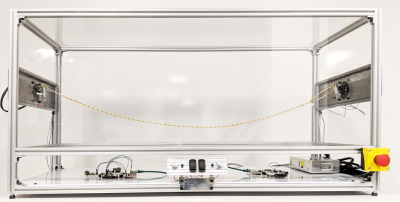IOL NeXt seeks to promote the exploration of new ideas leveraging emerging concepts in networking, cloud computing, cyber-physical systems, advanced manufacturing, the internet of things and other emerging areas.
The lab has long served as a conduit for students to connect with industry and apply academic learnings to real-world scenarios, by establishing long-term projects through the IOL NeXt program, a stronger bridge to the future will be established, with greater ties to academic research faculty and UNH resources.
IOL NeXt funding is not a guarantee, but instead must be applied for by student driven teams, seeking to pursue a topic in the relevant funding areas, correlated to the IOL industry foci. Click here for full details or Contact Us today.
Requirements
Projects funded by IOL NeXt must be student driven, multi-disciplinary efforts, and have UNH faculty involvement.
- No fewer than two students may be involved, at least four are recommended
- At least one of the students should be a UNH-IOL employee
- Multi-disciplinary in this context means student, staff, and/or faculty participation from at least two different areas. E.g. Computer Science and Mechanical Engineering.
- Projects funded must be either:
- In fulfillment of one or more participating student’s senior project
- In fulfillment of one or more participating students master project and/or thesis
- In fulfillment of work toward a conference or journal publication
- In fulfillment of work toward a contribution to a standards organization
Current Project(s)
- Time Sensitive Networks (TSN): This project showcases a Time Sensitive Network Electromechanical System. TSN is a method of utilizing standards-based protocols to facilitate the connectivity of devices by ensuring that they are all operating on the same time-base. Companies are beginning to turn to Industry 4.0 as a potential solution. TSN is fundamental to ensuring that machinery exchange time-relevant data to act upon quickly and reliably. Two motors, which represent industrial machinery, are synchronized using TSN to ensure they operate at a set output velocity. The resulting outputs can be used to produce standing waves in a rope. With TSN controls applied, the system will remain stable with the desired standing wave output.
What’s NeXt?
If you are interested in learning more about IOL NeXt Contact Us today!
